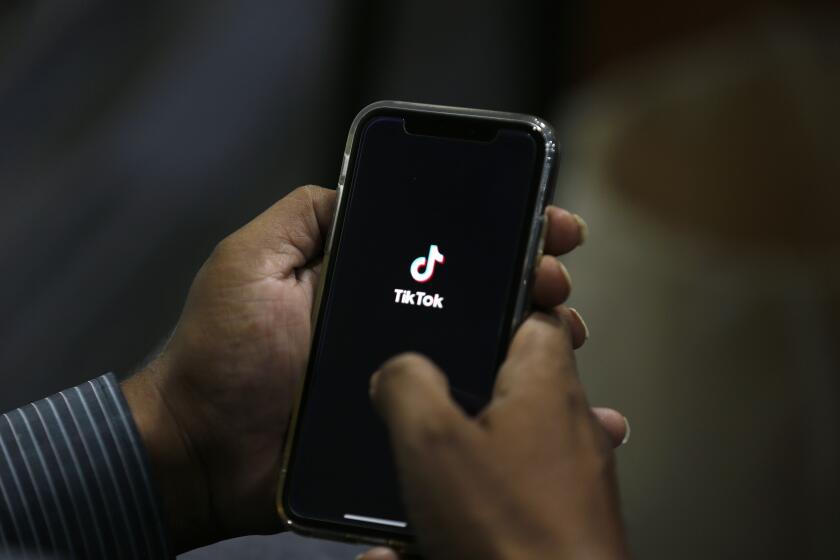As Google grows, employees carve own niches
- Share via
Reporting from San Jose — Halfway through what is expected to be the biggest hiring year in Google’s history, the Internet giant is discovering that a touchstone of its culture — employee groups — is becoming an ever more important way to navigate the fast-growing company.
Just ask Camille James. When she moved from Tokyo to take a job at Google three years ago, she had never lived in California, had never worked for a big company and knew not a soul at the Mountain View, Calif., firm. Fortunately, she knew how to bowl.
Hoping to make a connection, James organized a team in Google’s bowling league among the “Nooglers” — as new employees are called at Google — who started the same Monday she did. “It’s clearly a very big company, and I didn’t come from that background,” said James, a human resources employee. “But then you dig in and follow your own interests, and you find your own little micro community.”
Groups have always been an integral aspect of life at Google, but as the company approaches 30,000 employees, they have become an ever more crucial mooring for new and veteran employees at a company trying to assimilate Nooglers at a pace of more than 100 a week. Many Silicon Valley companies have groups for employee minority or cultural groups, but Google goes further, actively encouraging, and sometimes even providing financial support for, employees to organize special-interest groups based on such diverse topics as economic theory and photography.
Google has 19 Employee Resource Groups or ERGs, employee-initiated entities that receive financial support from the company and represent social, cultural or minority groups, including the Gayglers (lesbian and gay employees), the Greyglers (older employees), the Hispanic Googler Network, Google Women Engineers, VetNet for military veterans and the Black Googlers Network, or BGN.
But there are tens of thousands of special interest groups that can range in size from two to more than 1,000 members and cover topics from wine to hiking to quilting to Dungeons & Dragons. There are the Gleeglers (who sing a cappella); the Dooglers, who bring their dogs to work; the Snowglers (skiers); and the Skeptics (who question everything). There are groups for pilots, expectant moms and photographers, and a group for Googlers who like flea markets. There’s even a group for former start-up employees whose companies were bought by Google and who may struggle to navigate a company where they must be both entrepreneurs and employees.
Any employee can start a group — in fact, employees are encouraged to, said Stacy Sullivan, Google’s chief culture officer, a title bestowed by the founders. Most groups have an email alias on Google’s vast intranet system, such as “[email protected].” Google has more than 100,000 group aliases in its Intranet system, although not all groups are active.
For employees, the groups “have been kind of anchors and havens and think tanks — to actually be able to build their own community, just for their own support and interactions, within the mass of all Google,” Sullivan said. As Google has grown, “I think it’s become much more important because when you’re this big, you can lose sight of being connected to the mass around the world. So this is one way they can all pull together.”
Most employees belong to several groups. James, for example, belongs to the bowlers, the BGN, a salsa dancing group and a quilting group.
“It makes us more inclusive and it breaks down the walls and the disconnects that could happen in such a big organization,” James said. Though she joined Google’s bowling league to find friends, it has been a big part of building her own professional network within the company. To tackle a work project once, she connected with people on the finance side she’d met through bowling.
The very idea of taking it upon yourself to launch a group is an example of a basic tenet at Google: Ideas are supposed to bubble up from the grass roots. Managers are supposed to be enablers, not dictate from the top down.
“That’s our whole culture,” Sullivan said. And like Google’s free cafes, she said, Sergey Brin and Larry Page have always seen groups as a way to mix people who might not otherwise interact.
Organizers of groups such as the Gayglers and BGN also feel they are shaping the company internally, and even externally.
“You can be a very accepting company, but if the outside world doesn’t know, it’s not a selling point,” said Bennet Marks, an organizer of the Gayglers, who also launched Apple’s LGBT group in 1986 before moving to Google. “I think it makes a difference to people, to gay people and to straight people.”
Swift writes for the San Jose Mercury News/McClatchy.
More to Read
Inside the business of entertainment
The Wide Shot brings you news, analysis and insights on everything from streaming wars to production — and what it all means for the future.
You may occasionally receive promotional content from the Los Angeles Times.










